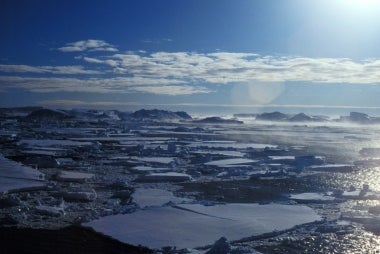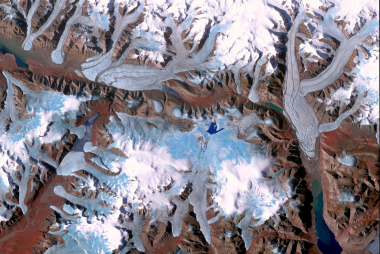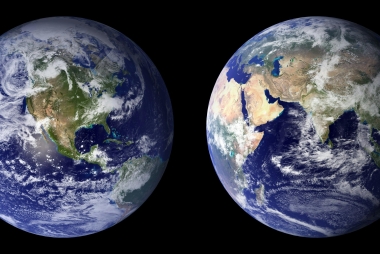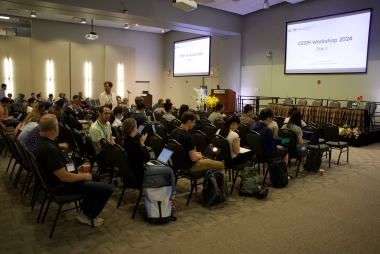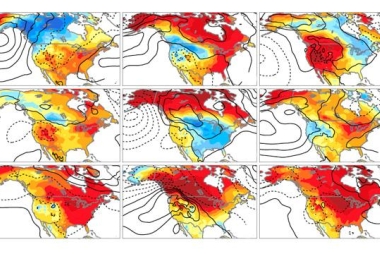Community Earth System Model 3 (CESM3): Plans, progress, timelines
Information on the science and infrastructure updates and timelines for the forthcoming CESM3 release. CESM3, which includes scientific advances in all components, is intended to be the model that is used for the CMIP7 DECK and Fast Track simulations.
Latest update: November 18, 2025
AGU Town Hall CESM3 Development Update (December 18, 2025)
The CESM development team is working towards a scientific release of version 3 of the Community Earth System Model (CESM3). CESM3 will contain numerous science and infrastructure improvements and is the model configuration intended for the simulations requested in the CMIP7 DECK and Fast Track.
The timeline for a public release, which will include code and scientifically supported configurations and model output for most DECK simulation (PI Control, Historical, and several standard idealized simulations), is targeted for spring 2026. The development team is hard at work tuning the model up to meet a wide range of calibration targets.
The component models that will be included in CESM3 are shown in Fig. 1. And, a detailed list of the changes that are slated for inclusion in each of the component models of CESM3 are listed in Table 1 below. Note that the list may not be fully complete and that some planned developments may not make it into the final default model configuration.
The aim of the CESM Project is for the released version to be the same model version that is used for CMIP7, which means that the timing of the release will be dictated to some degree by the availability of updated CMIP7 forcings. \ The intention is to use the Spectral Element dynamical core with a nominal 1deg resolution for atmosphere and land and an ~80km model top (mid-top, resolving the stratosphere and lower mesophere) and the MOM6 ocean model with ~2/3 deg resolution. CO2 emissions-driven mode is intended to be the default configuration for historical and scenario simulations.
Those who would like to track progress and issues that the CESM development team are working on are welcome to review the CESM3 Development Tracking github page. You can also follow along on development activities at the CESM code github page. For those interested in approximate computational costs of different CESM3 configurations for the purpose of proposal development, you can find timing estimates on Derecho here.
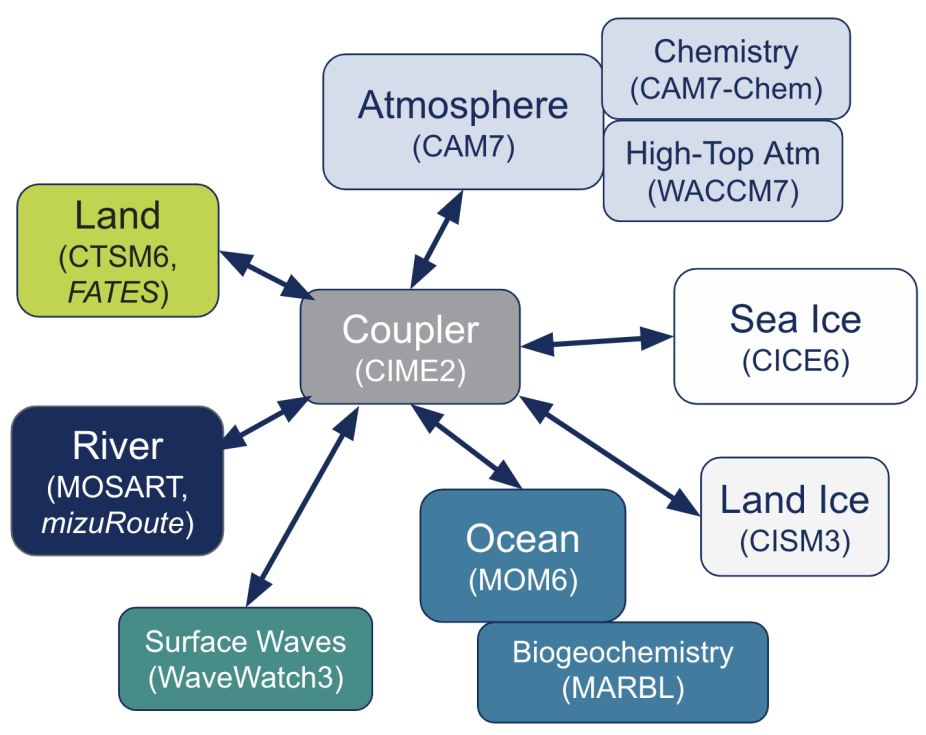
Table 1: Changes across CESM component models between CESM2 and CESM3
| Component | Change | Reason |
|---|---|---|
| Ocean |
Transition to MOM6 dycore
|
|
| Ocean |
Ocean bathymetry representation. POP had step-like bathymetry while MOM6 has a continuous bathymetry MOM6 allows for sub-grid-scale channels |
Better representation of topography-flow interactions and transport through narrow channels, such as Gibraltar. |
| Ocean |
Surface and bottom boundary conditions
|
Natural BC on freshwater is the correct physically based BC. It provides the correct closure for the hydrological cycle, including sea level rise from glacial melt. The non-Boussinesq option properly represents thermosteric sea level change. There is also an enthalpy flux associated with mass exchanges that were neglected in POP improving energy conservation across the system. Geothermal heating is a significant forcing for the circulation in the abyssal ocean. Depth-dependent frazil formation provides a more physically-based representation of ice-ocean interactions. |
| Ocean |
Lateral sub-grid-scale closures
|
Leveraging developments in the multi-institutional Ocean Energy and Transport Climate Process Team to better represent mesoscale eddy transport processes. These new closures are scale-adaptive across resolutions. |
| Ocean |
Vertical sub-grid-scale closures
|
More accurate representation of influences of wind waves and swell on near-surface momentum and tracer mixing. |
| Ocean |
Grid resolution
|
Better representation of the mean flow and wave propagation in the workhorse resolution. Better aspect ratio in the horizontal grids (more numerically accurate). Better representation of surface boundary layer, air-sea interaction, and biogeochemical processes. |
| Ocean | Regional one-way nesting capability |
POP did not have open boundary conditions, so could not be used for regional simulations. Regional ocean simulations opens up the possibility of additional actionable science within CESM. |
| Ocean |
Parameterizations in POP currently lacking in MOM6
|
Currently seeking funding to adapt the EBM to MOM6. Unclear if overflow parameterization is needed in MOM6 when using an isopycnal coordinate. |
| Ocean |
Output and post-processing
|
More user-friendly selection of output variables, their frequency and file streams. |
| Sea Ice | Transition to CICE6 | CICE6 is the development sea ice model being updated by the CICE Consortium. The CICE6 code has been significantly reconfigured and refactored such that the dynamics and thermodynamics have been separated. CICE6 now calls Icepack, which is responsible for calculating column physics. |
| Sea Ice | Updates to sea ice physics (e.g. snow on sea ice, melt ponds, landfast ice) | Needed improved physics for better simulation of sea ice evolution and for applications work. |
| Sea Ice | Implementation of a Floe Size Distribution (FSD) | Implementation of a joint distribution of ice thickness and floe size. Floe sizes are important in physical processes including new ice formation, welding of floes, lateral growth and melt, and fracture of floes by ocean surface waves. Representing the FSD has been shown to strongly impact the sea ice concentration and seasonal processes driving sea ice evolution. |
| Land | New surface datasets & dataset generation with ESMF (cime) infrastructure | Improved / updated source datasets available; Enables higher resolutions and new features (e.g. transient urban capabilities and shifting cultivation) |
| Land |
Land-atmosphere exchange:
|
Improved calculations of biophysical fluxes and dust emissions sources. |
| Land |
Improved cryosphere representation:
|
More realistic and physical representations of snow-aerosol-radiation interactions and thermal properties improves the CLM simulated snowpack evolution and soil temperatures in many regions. Excess ice reduces the rate of arctic soil warming and allows for projections of ground subsidence that may occur with permafrost thaw. |
| Land |
Hydrologic developments including:
|
The hillslope hydrology model captures aspect and elevation effects on energy and water balance and will be an optional feature for land-only simulations. The irrigation improvements consider irrigation sources (unconfined vs. confined aquifers) and application methods (sprinkler vs drip). |
| Land / River | Development of mizuRoute river model (option) | This vector-based river model allows for more flexibility in routing schemes and catchment definition. Moreover it’s being developed in-house, which will allow us to replace RTM and Mosart river models in CESM with mizuRoute. mizuRoute will be an optional feature for land-only simulations in CESM3. |
| Land |
Ecosystems and biogeochemistry:
|
Work here was aimed at improving regional biases in plant productivity and survival. With SASU we aim to accelerate the spin up of ecosystem carbon and nitrogen pools to facilitate more rapid model development and parameter calibration. Ongoing developments with FATES and MIMICS aim to provide more ecologically realistic simulations of biotic response to climate change, both above- and below-ground. FATES developments include satellite and no-competition configurations that we will be able to run in transient simulations over historical and SSP scenarios. FATES and MIMICS will be optional features for land-only simulations. |
| Land |
Crop Model:
|
CLM was the only land model with an explicit crop model in CMIP6 archive. Developments here provide expanded functionality and are aimed at addressing known biases and limitations in our representation of crop growth and management. |
| Land |
Urban Model:
|
CLM was also the only land model with an explicit urban model in the CMIP archive. Developments here provide transient urban capabilities and consideration of air-conditioning adoption. |
| Land |
Model infrastructure:
|
Development of a sparse grid and application of SASU spinup provides opportunities for machine learning approaches to calibrate land model parameters in ways that are new for CESM3. Additional infrastructure and tutorials were built for running single point simulations with data from flux tower sites on HPC, containers, and in the cloud. New compsets allow for paleo simulations and idealized land simulations while SLIM allows for simplified representation of land features in CESM. Finally, reduced complexity modes with reduced land unit and PFT numbers allow for faster solutions for application in high resolution and NWP applications. |
| Atmosphere | Changed dynamical core from FV (used for CAM4,5,6) to spectral-elements (SE) |
|
| Atmosphere | Switched from MG to PUMAS microphysics code base (incl. several science changes) |
Fix bug likely causing large climate sensitivity in CESM2 Add missing processes, adding hydrometeor types |
| Atmosphere | Updated L-scale CLUBB code with prognostic momentum transport | More consistent with the rest of CLUBB physics (other moments are prognosed so more consistent to prognose momentum fluxes as well) |
| Atmosphere | Convective gustiness parameterization |
Missing process for source of latent heat flux (particularly over ocean in the tropics at low wind speeds) Improve tropical variability (e.g. MJO) |
| Atmosphere | New radiation code base (RRTMG-P) | Modernize radiations code (with GPU support) and improve radiation algorithms |
| Atmosphere | New gravity wave drag parameterization [not in code base yet] | Missing drag sources to improve high-top stratospheric wind biases |
| Atmosphere | Topography software improvements (e.g. command line interface, not smoothing PHIS over ocean, support for ESMF file format,...) |
Ease of use for community Improve ocean-atmosphere coupling |
| Atmosphere | Re-order physics | To alleviate spurious surface wind oscillations CLUBB call was moved to after coupler call. |
| Atmosphere | CAM physics support for z-based dynamical core MPAS | Provide non-hydrostatic capability in CAM and support SIMA/EarthWorks |
| Atmosphere | Deep convection scheme (ZM) modification: alternative convective parcel calculation | Adapt ZM for higher boundary layer resolution |
| Atmosphere | Richarson number based free-atmosphere mixing | CLUBB does not appear to provide enough free -atmosphere mixing hence a Richardson-number based vertical mixing scheme from CAM4 has been enabled where CLUBB is not active Improves stability of model |
| Atmos chemistry | GHG chemistry updates | Improved SOA and aerosol description, coupling with biogenic SOA precursors |
| Atmos chemistry | OASISS | Online DMS emissions based on Online Air-Sea Interface for Soluble Species |
| Atmos chemistry | Improved chemical mechanisms TS2,3, SLH chemistry | Different science questions required chemical mechanisms of different complexity. Air quality studies require more tropospheric chemistry, short-lived halogens are important for improved climate and ozone |
| Atmos chemistry | Sectional Aerosol Model CARMA in CESM2 | Option to use the more comprehensive sectional aerosol model CARMA as an alternative to the standard modal aerosol model. |
| Atmos chemistry | GEOS-Chem | An alternative chemistry module; increase collaborations between GEOS-Chem and CESM communities. |
| Atmos chemistry | HEMCO emissions | Allows online regridding and incorporating regional inventories into global inventories. |
| Atmos chemistry | CAMchem MPAS | Non-hydrostatic dynamical core to allow simulations at <5km horizontal resolution |
| Atmos chemistry | TUV-x | Improve the representation of photochemical decomposition of reactive species generating different radicals (O1D, OH, Cl/Br/I atoms) as well as the penetration of downwelling radiation to the lower troposphere. Also improvements for the treatment of aerosols. |
| Whole Atmosphere | Inline TUV-x | Improved representation of photolysis and heating rates. |
| Whole Atmosphere | SE dynamical core for WACCM and WACCM-X | Maintain consistency with CAM. Enables high resolution simulations. |
| Land Ice | Multiple ice sheet evolution capability. | Allow simultaneous evolution of more than 1 land ice grid (e.g. Greenland and Antarctica). |
| Land Ice | Ice-ocean interaction | Two-way field exchanges between the ocean and land-ice components. |
| Land Ice | Data GLC option | Streamlined coupling with CTSM and NUOPC. |
| Land Ice |
CISM physics improvements:
|
Improving the realism of ice sheet simulations. |
| Land Ice | Support for dynamic simulations of mountain glaciers in CISM. | Study water availability in ESM. |
| Paleoclimate | Use paleo to inform model development | Perform simulations of ice-age and hothouse climates that could be used for model assessment and tuning |
| Software Engineering | Software engineering support for most of the above items | Most science changes also require software engineering contributions; we are not calling those out separately here. |
| Software Engineering |
Migration of driver/coupler infrastructure to use the Earth System Modeling Framework (ESMF). Key pieces of this include:
|
There were many reasons for making this change; key among these are:
|
| Software engineering | Extensive work to support ultra-high resolution (3.75km) simulations: required changes in many components as well as ESMF for the sake of memory scalability, performance, etc. | There is interest in ultra-high resolution for various projects, but pushing the system to this limit exposed memory and performance bottlenecks that we have needed to address. |
| Software engineering |
Better support for new grids, including:
|
It is becoming much more common for users to do simulations on custom grids, such as regionally-refined grids, so it was important for this use case to be easier. |
| Software engineering | Support for cloud / container platforms | Providing CESM via a Docker container that can be run on the cloud or other systems allows users to get CESM running quickly without needing their own computing resources and porting effort. This has been especially useful for tutorials, automated testing and supporting local development on laptops / desktops. |
| Software engineering | Various improvements to I/O performance via the ParallelIO (PIO) library | I/O performance can be a bottleneck, particularly at high resolutions. We have made improvements such as optimizing the ordering of variables being written and introducing initial capabilities for asynchronous I/O to improve performance. |
| Software engineering | Split CIME into its functional pieces, keeping CIME itself as mainly the Python-based Case Control System. | In CESM2, CIME included not only the Python-based Case Control System but also various Fortran-based infrastructure, such as the driver, coupler and share code. We have split these pieces into separate repositories to facilitate continued collaboration on the pieces shared with E3SM (the Case Control System) while providing separate control over the unshared pieces. |
| Software engineering | New tool for managing the versions of components and externals in a given CESM version: git-fleximod | The tool we had developed for managing versions of components and externals in CESM2, manage_externals, was becoming difficult to maintain and had unneeded complexity because all of our repositories are now in git (rather than subversion). We developed a replacement tool, git-fleximod, which has similar functionality but is much simpler due to leveraging recent git features, and so will be easier to maintain moving forward. |
More information coming soon...


